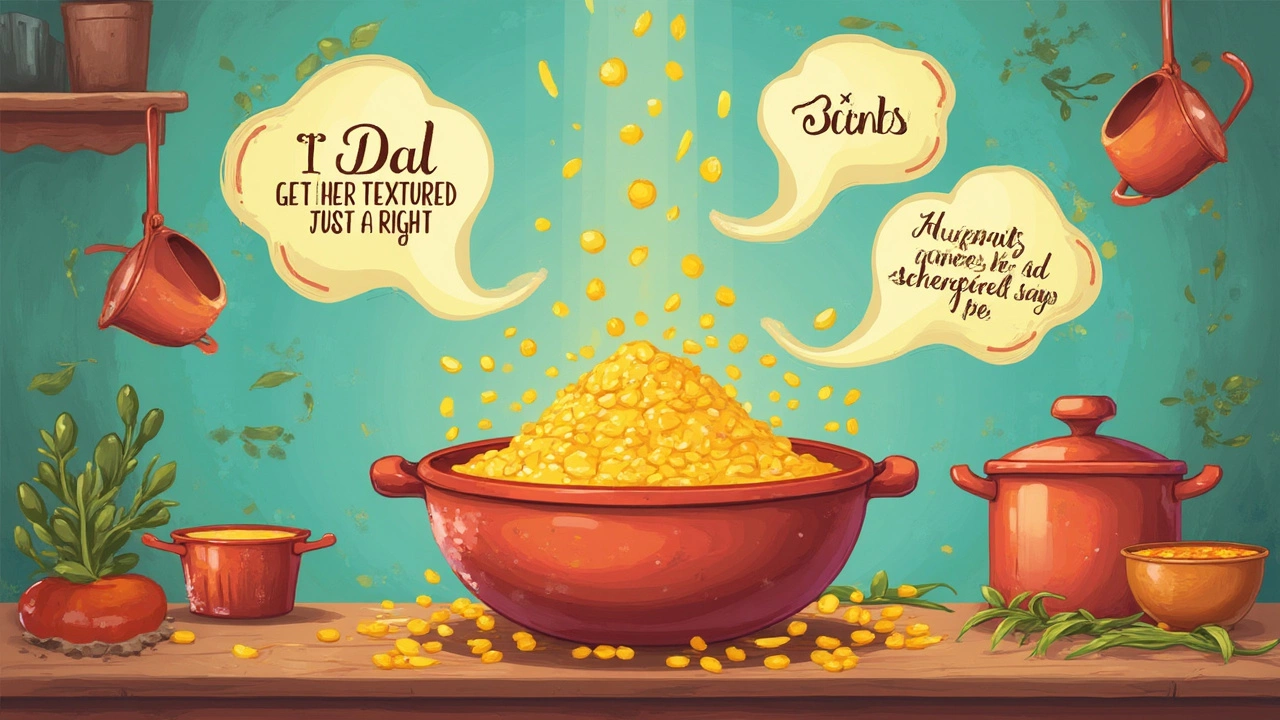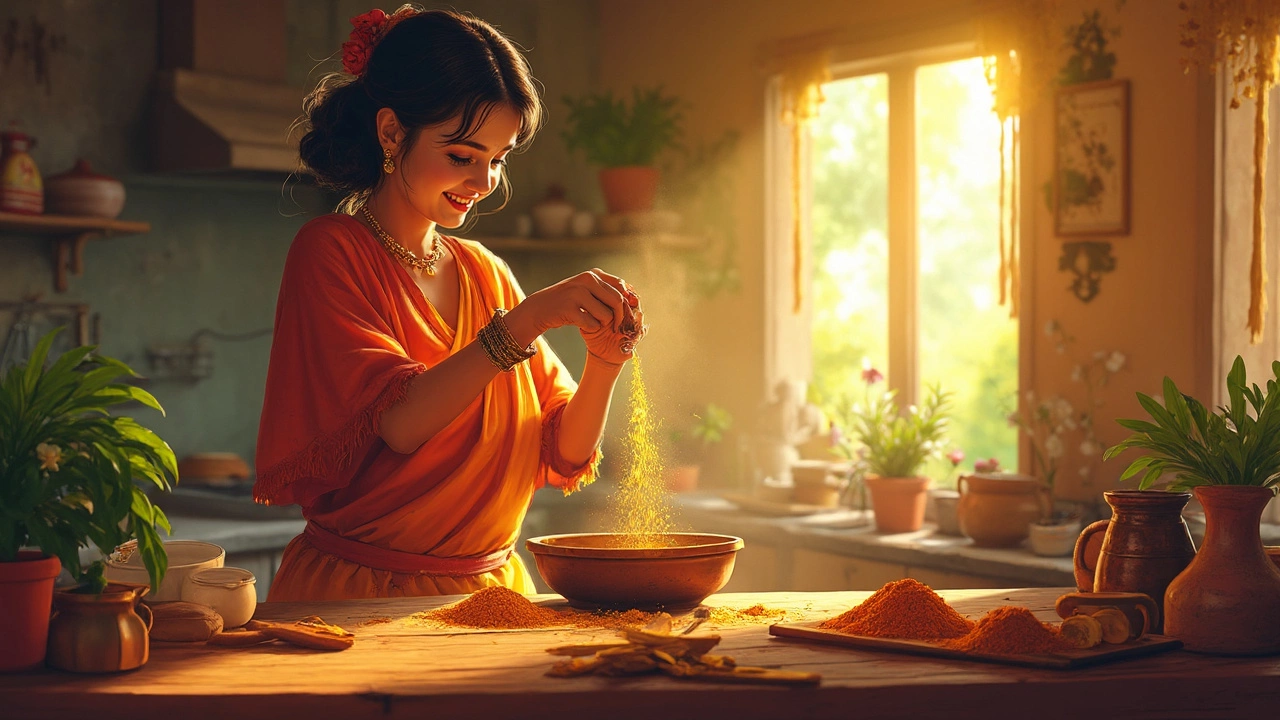Everyone loves a bowl of comforting dal, right? But the secret to nailing it every time is knowing the right water to dal ratio. Seriously, it's like the golden rule of dal-making.
So, what's the magic formula? For most types of dal, the rule of thumb is to use a 3:1 water to dal ratio. That means three cups of water for every one cup of dal. This generally works for popular dals like tur dal, masoor dal, and moong dal. Not only does this ratio help cook the dal evenly, but it also ensures the texture is just right—not too soupy or too thick.
Why is this ratio such a big deal? Well, imagine making soup with almost no broth... sounds odd, right? The right amount of water lets the dal absorb all those lovely flavors from your spices, making every spoonful a delight. Plus, if you've ever struggled with dal sticking to the pot, this ratio helps prevent that mess.
- Understanding Dal Basics
- Perfect Water to Dal Ratio
- Why the Ratio Matters
- Tips for Adjusting Consistency
- Common Mistakes to Avoid
- Creative Additions for Flavor
Understanding Dal Basics
If you’ve ever dived into Indian cuisine, you know what a big deal dal is. But for those unfamiliar, dal refers to lentils or split pulses that are a staple in Indian households. They’re packed with protein, easy to cook, and incredibly versatile. Now, isn’t that a kitchen hero?
Before we jump into how to cook the perfect dal, let's get to know our players. Common types of dal include tur dal (pigeon peas), masoor dal (red lentils), and moong dal (mung beans). Each type has its own cooking time and slightly different water needs, so it’s smart to be aware of what you’re using.
The Importance of Quality
Like any dish, quality matters. Fresh dal cooks better and tastes superior. Trust me, it’s worth checking the packaging dates. British chef Jamie Oliver once said,
"Cooking is about passion, so it may look slightly temperamental in a way that it’s too assertive to the naked eye."Essentially, good ingredients—like fresh dal—make all the difference.
Health Benefits of Dal
Did you know these tiny pulses pack quite a punch health-wise? Dal is not only high in protein but also rich in essential minerals like iron and folic acid. It’s like eating yourself to good health, one spoonful at a time.
Here’s a quick glance at some nutritional values:
| Dal Type | Calories per 100g | Protein (g) | Fiber (g) |
|---|---|---|---|
| Tur Dal | 343 | 22.3 | 15.6 |
| Masoor Dal | 352 | 25.5 | 11.3 |
| Moong Dal | 347 | 24.5 | 8.5 |
Armed with this basic knowledge, you’re on your way to bringing that aromatic bowl of dal to life. Up next, let's get the water to dal ratio just right!
Perfect Water to Dal Ratio
When it comes to cooking dal, getting the water to dal ratio right is like hitting the jackpot. Why? Because it determines whether your dal is a fail or a flavor-packed delight. So, let's simplify this crucial part of the process.
The Magic 3:1 Ratio
The golden number here is a 3:1 ratio—three parts water to one part dal. This generally works for most types of dal. Whether you're cooking tur dal, masoor dal, or moong dal, this ratio is your trusty companion.
Wonder why this works so well? Because it provides just the right amount of moisture for the dal to fully absorb flavors from spices and other ingredients. As a bonus, it helps prevent the dal from sticking to the bottom of the pot, which we all know can be a real pain.
Adjusting the Ratio for Different Dals
Now, not every type of dal is a one-size-fits-all. For example, chana dal is a bit denser than masoor dal, needing a slightly higher water ratio, about 4:1. So, if you're venturing into different varieties, consider the texture and adjust water accordingly.
Tip: If your dal tends to be runny, reducing water by 1/2 cup may just do the trick without compromising flavor.
"Consistency is key, and understanding the particulars of your ingredients can elevate any dish from good to great," says renowned chef, Sanjeev Kapoor.
| Type of Dal | Recommended Water Ratio |
|---|---|
| Tur Dal | 3:1 |
| Masoor Dal | 3:1 |
| Moong Dal | 3:1 |
| Chana Dal | 4:1 |
Remember, this isn't just about following numbers; it's a guide to help you adapt and ace your dal recipe game. With practice, you'll get the feel of how your dal should look and taste, making it just the way you like it.
Why the Ratio Matters
The water to dal ratio might sound trivial, but it’s like the backbone of any good dal recipe. Picture this: you and your taste buds are expecting a silky, flavorful dish, but you end up with something lumpy or watery. Not fun, right?
Getting the ratio right is crucial because it affects how your dal absorbs flavors and its final texture. Basically, water works its magic by softening the dal, allowing it to soak up all those herbs and spices you’ve added. Too little water, and you’re left with a dry, undercooked mess. Too much, and you’re looking at a soupy situation.
Impact on Cooking Time
Another reason ratios rule is because they influence cooking time. With just the right amount, your dal simmers down evenly, absorbs flavors well, and reaches the perfect consistency in a reasonable time. Nobody wants to hover over the stove forever, right?
Health Benefits
Ever heard the saying, "Too much of a good thing is bad"? This applies here too. When you overdo the water, you dilute essential nutrients from the dal. On the flip side, a balanced water dal ratio helps retain more of those proteins and fibers we all need.
Practical Tips
- Remember, experimenting with the ratio can adjust how thick or thin you want your dal to be. But always start with the basic 3:1 rule.
- If you’re using a pressure cooker, you might need slightly less water because less evaporates.
- If adding tomatoes, they contribute liquid too, so reduce water slightly to compensate.
At the end of the day, getting the water right means you’re on the road to dal that’s homestyle and just how you like it!

Tips for Adjusting Consistency
Alright, so maybe that three-to-one water to dal ratio didn't work out like you planned. Don't worry—adjusting the consistency of your dal is easy peasy.
Add More Water
If your dal is thick, almost like a paste, don't stress. Just add some hot water. Start with a half cup and stir it in, then check the texture. If it's still too thick, gradually add more—can't go wrong when you do it little by little! Adjust the seasoning if necessary, since additional water can dilute it.
Thicken It Up
On the flip side, if you find your dal is too watery, you can thicken things up. Just simmer the pot without a lid. This way, excess water evaporates. Give it a stir now and then to prevent sticking. Alternatively, mash some of the dal using a ladle—the starchy goodness thickens things up nicely.
Consistency Cheats
- If you have cooked potatoes, smashing them into your dal works wonders for thickening both the texture and flavor.
- Some cooks add a teaspoon of wheat flour or cornstarch mixed with a bit of water for quick adjustments—before doing this, remember to stir well to avoid lumps.
| Water Added | Effect on Consistency |
|---|---|
| 0.5 cup | Thick to medium |
| 1 cup | Medium to soupy |
Remember, dal is all about personalization. Some like it thick enough to scoop with a fork, others prefer it slightly soupy to mix with rice. There's no wrong way, just your way. Keep adjusting until you find your perfect texture!
Common Mistakes to Avoid
Cooking dal seems simple enough, but there are a few tricky pitfalls where many home cooks slip up. To make sure you’re not one of them, let’s talk about what to dodge in your quest for dal perfection.
Not Rinsing and Soaking Enough
One of the first errors is skipping the rinse or the soak. You might be in a hurry, but cooking dal without rinsing can leave some gritty unpleasantries behind. Most dal types benefit from a rinse and a soak; these steps help in reducing cooking time and improve digestibility.
Ignoring the Importance of the Water Ratio
We’ve mentioned the 3:1 ratio already, right? Well, ignore it at your peril. A common blunder is winging the water dal ratio. Use too little, and you'll end up with something like baby food, too much and it could end up like soup. Measure it out, and your future self will thank you!
Overcooking or Undercooking
This is another biggie in the dal world. Boil just until the dal is tender; overdo it, and it turns into mush. Keep an eye on it, giving it a taste test now and then.
Adding Salt Too Early
Lovers of salt, hold back a sec! Adding salt too early can toughen the dal, slowing the cooking process. Best to sprinkle in your salt and spices near the end.
Neglecting the Tadka (Tempering)
Skipping the tadka step is like opting out of the final chorus of your favorite song—it’s a no-no. A well-made tadka with garlic, cumin, or mustard seeds added to the dal boosts its flavor to levels you don’t want to miss out on.
| Mistake | Consequence |
|---|---|
| Skip Rinsing | Gritty texture |
| Wrong Water Ratio | Too thick or too watery dal |
| Early Salt Addition | Longer cooking time |
By steering clear of these common mistakes, you’ll be well on your way to crafting a delightful bowl of dal that's perfectly cooked and beautifully seasoned.
Creative Additions for Flavor
Spicing up your dal recipe is a total game changer. Sure, sticking to the basics is great, but adding a little twist can make all the difference. Let's chat about some simple yet impactful add-ins you might want to try.
Herbs and Spices
First off, think about using fresh herbs. Coriander leaves or cilantro right at the end of cooking add a fresh zing to your dal. If you’re into something bolder, try kasuri methi (dried fenugreek leaves). It adds an earthy aroma that feels like a big warm hug.
Tadka (Tempering)
Ever tried a tadka? It's basically frying spices in a bit of oil or ghee. Common ingredients include cumin seeds, mustard seeds, and garlic. Pour this sizzling mix over your cooked dal for a burst of flavor. Seriously, it’s like magic!
Vegetables and Lentils Mix
Adding veggies is another smart move. Spinach, tomatoes, or pumpkin are great ways to boost the nutrition of your dal preparation. You could even mix different types of lentils together for a unique texture.
Coconut Milk for Creaminess
Want your dal to have a rich, creamy feel? Stir in a bit of coconut milk. This is especially fab for dals like chana dal, giving it a slight sweetness and richer body.
Experiment with Condiments
Lastly, don't shy away from adding some condiments like tamarind pulp for a tangy kick or jaggery for sweetness. These little additions bring layers of flavors that keep you coming back for more.
Your journey with cooking dal doesn't have to be boring. Get creative and make it as exciting as you are!
